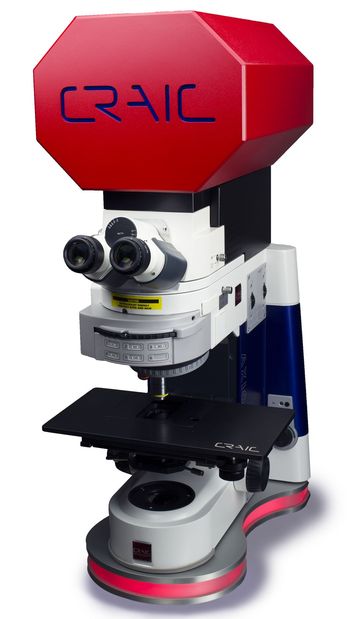
CRAIC Technologies, a leading innovator of UV-visible-NIR microanalysis solutions, is proud to announce the introduction of the Scorpii™ broadband illumination kit. Scorpii™ is designed for use exclusively with CRAIC microspectrophotometers. This broadband lighting package, when fitted to a CRAIC microspectrometer, offers a spectral range from the deep ultraviolet through the visible range and far into the near infrared region. Scorpii™ also features enhanced source stability for improved signal-to-noise ratios in spectra, dramatically longer lamp life and CRAIC Technologies unique SampleSafe™ technology. SampleSafe™ was conceived as a way to protect your samples from such effects as photobleaching and other photochemical issues.
“Scorpii™ was conceived to offer a host of new features to our customers in a single package. This new illumination kit is more stable than previous light sources, has a broader spectral range, and a much longer source life. It also features our new SampleSafe™ technology to protect our customers samples while being analyzed with the microspectrometer” states Dr. Paul Martin, president of CRAIC Technologies. “Our engineers have created this sophisticated illumination kit after listening to our customer's suggestions. As such it is now featured in our most capable UV-visible-NIR range microspectrophotometers with a concurrent increase in performance."
The Scorpii™ advanced illumination system integrates long lifetime light sources, electronics controls, power supplies and software with a unique optical layout that extends the useable spectral range of CRAIC microspectrometers while reducing maintenance by featuring long life light sources. The design also protects the customers samples from photochemical effects, such as photobleaching. This is especially important to customers who must illuminate their samples for long periods of time. All told, the kit represents a leap forward in both illumination and microspectroscopy.
